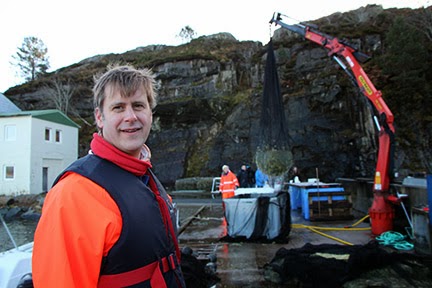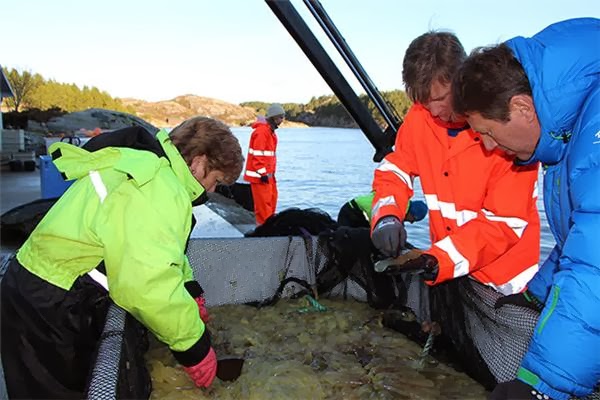

| Visitors Now: | |
| Total Visits: | |
| Total Stories: |

| Story Views | |
| Now: | |
| Last Hour: | |
| Last 24 Hours: | |
| Total: | |
Slimy Tunicates May Be Worth Billions
“Production has so far exceeded our greatest expectations,” said researcher Christofer Troedsson of Uni Research.
Against a backdrop of mountains and fjords, eight people worked intensively for two weeks to collect 30 tons of tunicates, which were then washed, pressed, dried and ground into animal and fish feed.
“This is really exciting. We’ve gone from small-scale experiments to a large-scale pilot project,” said Troedsson.
A nuisance for boat owners
Tunicates are found in all the world’s oceans. When their water content is removed, they consist of 55 percent protein, and they are also the only animals that produce cellulose. They could therefore in the long term be used for both feed and biofuel.
“This is about producing marine protein at the bottom of the marine food chain. Today we mostly use other types of fish that are high up in the food chain. Tunicates eat algae and microorganisms that pass by.
In other words, we’ve taken an organism that usually represents a problem and turned it into something positive,” said Thorolf Magnesen, Professor of Aquaculture at the University of Bergen (UiB).
Trying things out
In Rongsundet in Øygarden researchers have placed various structures, such as ropes with plates and mesh to find out what will produce the most tunicates, and therefore the most biomass. But the first objective is to produce feed for ruminants and salmon in collaboration with the agricultural cooperative Felleskjøpet and the fish feed producer Ewos.
The tunicates are first brought on board a boat, washed in fresh water, and then 70 percent of the water is pressed out. The remains are sent to the company Weyland at Flesland where they are ground and dried into powder.
“This is an organism found in seawater all over the world. Tunicates improve the water quality by removing particles from the sea. There is a huge potential in using this resource for feed. We’re on the right track, but there’s still a long way to go,” said Magnesen.
He and his colleagues are trying out various methods of harvesting, washing and pressing.
“This is the first time we’ve used this equipment. So far it’s been better than we expected,” said Magnesen.
Troedsson agreed:
They are hoping to get a pilot plant where the entire process from harvesting to the finished product can take place.
Lately, representatives of several media houses and the Research Council visited the plant at Øygarden. The Research Council has great faith in the investment they have made.
“A new industry is a possibility. Cellulose can be produced here and there’s marine protein that’s in short supply in the feed business,” Ulf Visur Syversen, a senior consultant at the Research Council, told the Norwegian Broadcasting Corporation NRK.
Contacts and sources:
Uni Research
Source: http://www.ineffableisland.com/2013/12/slimy-tunicates-may-be-worth-billions.html





